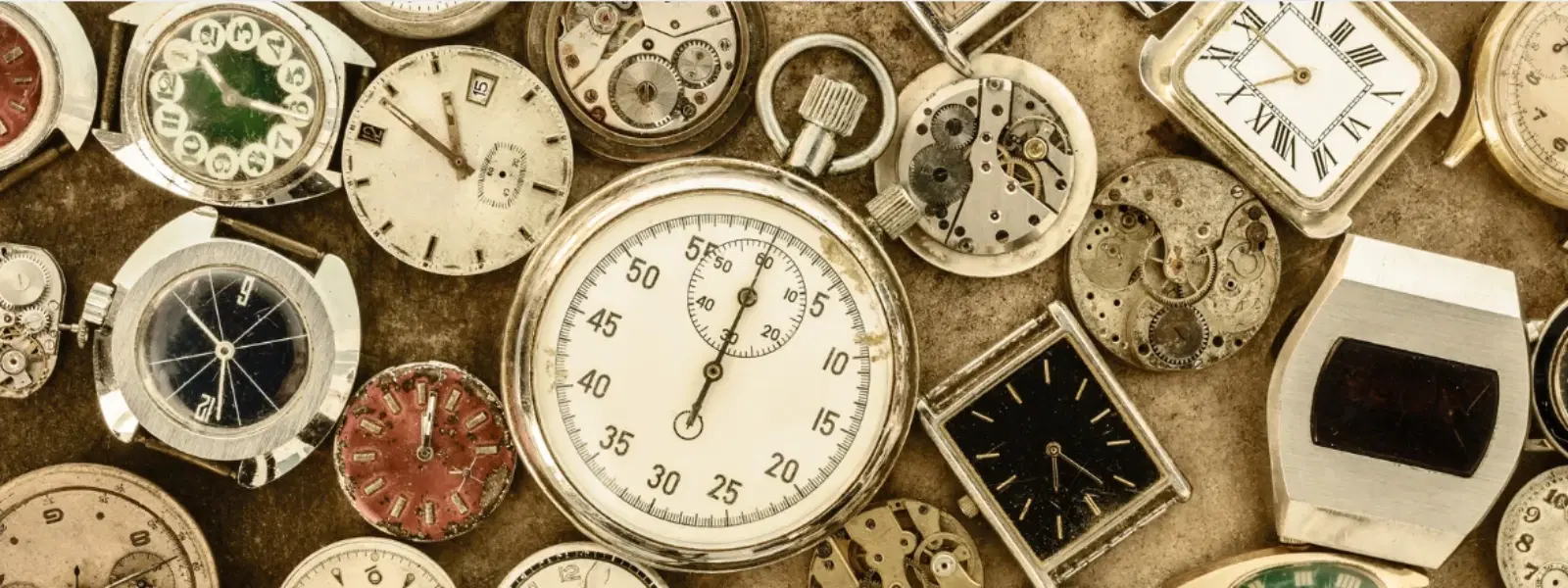
Luxury Edit
•05 min read

Vintage watches are not just instruments to tell time; they are expressions of personality and identity. In this guide, we explore how you can spot authentic vintage watches like a pro. Readers will gain practical insights into what makes a watch truly vintage, learn the art of identifying antique luxury watches and classic timepieces, and discover expert tips to confidently assess luxury retro watches and heritage wristwatches. Whether you are a seasoned collector or someone with an appreciation for collectible luxury watches, this post is packed with clear, engaging advice.
Vintage watches represent more than timekeeping; they are elegant statements of history and craftsmanship. Typically, a vintage watch refers to a timepiece that is at least 20-30 years old and retains most of its original parts such as the case, dial, and movement. These high-end vintage watches carry design elements that capture the essence of their era and express both luxury and individuality. There is a subtle difference when comparing vintage, antique, and retro watches. For instance, vintage watches range from 20 to 100 years old and are often the go-to choice for collectors of luxury classic watches, while antique watches are over a century old and are revered as rare luxury watches with historical importance. On the other hand, retro watches are modern creations influenced by the design cues of earlier times.
To confidently authenticate a vintage watch, a careful examination of its components is essential. One of the most visible features is the dial and hands. A genuine timepiece will display natural patina on the dial, an unmistakable sign of age. The fonts and spacing on a vintage watch should be consistent and clearly reflective of the era it represents—authentic classic timepieces leave nothing to chance with their precise craftsmanship. Hands are another crucial element; if they do not match the design and time period of the watch, it might signal the use of non-original or replacement parts.
An authentic watch often reveals its true character when you inspect the movement under the case back. High-quality luxury mechanical watches feature beautifully engraved movements that align with their serial numbers. The presence of clean finishing and hallmark engravings further confirms the authenticity of the piece. Remember, matching the movement number with the case serial number is a strong indicator that the watch has maintained its originality over time.
The materials used in vintage watches also speak volumes about their authenticity. Premium metals like stainless steel, gold, or platinum are common choices for these prestige timepieces. When scrutinizing a watch, check the case for authentic hallmarks and stamps that reflect high-end manufacturing standards. Signs of over-polishing or excessive wear might suggest that the watch has been altered, potentially diminishing its value and allure as a collectible luxury watch.

One of the most reliable ways to confirm a watch's authenticity is to verify its serial and reference numbers. These numbers should be deeply and evenly engraved, matching records in recognized manufacturer databases. This step is indispensable when dealing with rare luxury watches and helps ensure that your investment is sound and true to its time-honored legacy.
While the charm of vintage watches is undeniable, buyers must remain vigilant against counterfeits or poorly restored pieces. Inconsistent branding can be a major red flag. If the logos or inscriptions appear misaligned or are poorly etched, it could indicate that the piece is not authentic. Additionally, the presence of incorrect or mismatched components, such as crowns or bezels that do not align with the rest of the design, should be treated with caution. Pricing is another important aspect: if the deal seems too good to be true, it is often wise to step back and reassess. Authentic collectible luxury watches rarely offer bargain prices unless there is a justifiable reason. Lastly, consider the credibility of the seller. Sellers with limited history or reputation in dealing with luxury retro watches may not always be reliable. It is best to engage with trusted sources that value authenticity and adhere to meticulous standards.
Knowledge is the cornerstone when investing in vintage watches. Doing your homework can save you from potential pitfalls. It is important to study the history of various models and understand the unique design elements that set apart luxury mechanical watches from mere replicas. A deep dive into the background of a model will help you appreciate the sophistication of luxury classic watches. Equally vital is buying from reputable sources. Whether you choose a trusted dealer, a respected auction house, or a certified vintage watch shop, sourcing the piece from a known buyer ensures that you are acquiring a genuine collectible luxury watch. When making your purchase, request appropriate documentation such as service records, certificates of authenticity, and original papers to reinforce the watch's provenance. Moreover, consider getting a professional appraisal from a certified horologist or watchmaker, as their trained eye will help spot any minute inconsistencies.
Pro Tip: The Devil is in the Details
When evaluating a vintage watch, attention to detail is crucial. Look closely at the alignment of the dial markings and the condition of the movement. Subtle clues—like the exactness of the engravings—can significantly confirm authenticity. Compare your potential purchase with verified examples to ensure every detail matches up.
Owning a vintage watch is not only about making a stylish statement; it is also about preserving a piece of history. Proper care and maintenance are essential to maintain the value and functionality of these timeless treasures. Regular servicing by a certified watchmaker is a must, especially for luxury mechanical watches. This prevents over-polishing and ensures that the original shape and finish of the case remain intact. Storage is another vital aspect: keep your vintage watch in a temperature-controlled environment to prevent any damage due to moisture, and use a dedicated watch box or roll for additional protection. Handling your watch with care can further extend its lifespan. Avoid wearing these delicate pieces during strenuous activities and wind mechanical watches gently to preserve the integrity of the movement.
-8704a161-e35d-4932-b982-017add6889b1.png&w=3840&q=75)
A vintage watch typically dates between 20 to 100 years old, retains most of its original components, and represents the design and craftsmanship of its era.
Examine the dial, movement, and serial numbers closely, and compare these details with trusted manufacturer records. A professional appraisal by a certified expert is also recommended.
Many collectors view high-end vintage watches as valuable investments due to their unique design, limited production, and historical significance.
Styles that often stand out include antique luxury watches, classic timepieces, and luxury mechanical watches. These pieces are admired for their design and enduring quality.
It is recommended to have vintage watches serviced every 3 to 5 years to ensure performance and longevity.
Spotting an authentic vintage watch combines knowledge, careful attention to detail, and a bit of expertise. By learning what defines a truly vintage piece, recognizing red flags, and incorporating expert advice, you can confidently navigate the world of high-end vintage watches. These pieces not only function as elegant accessories but also serve as investments in heritage and craftsmanship. Take your time, research thoroughly, and enjoy the journey of discovering timeless, collectible luxury watches that reflect a storied past and an enduring commitment to quality.